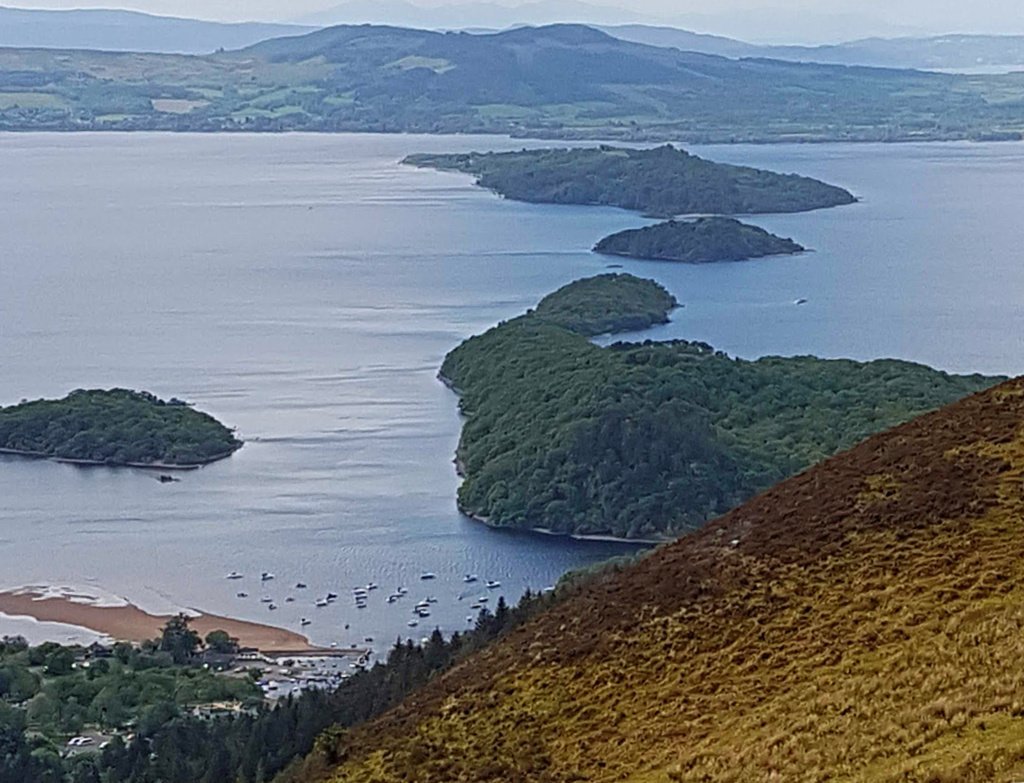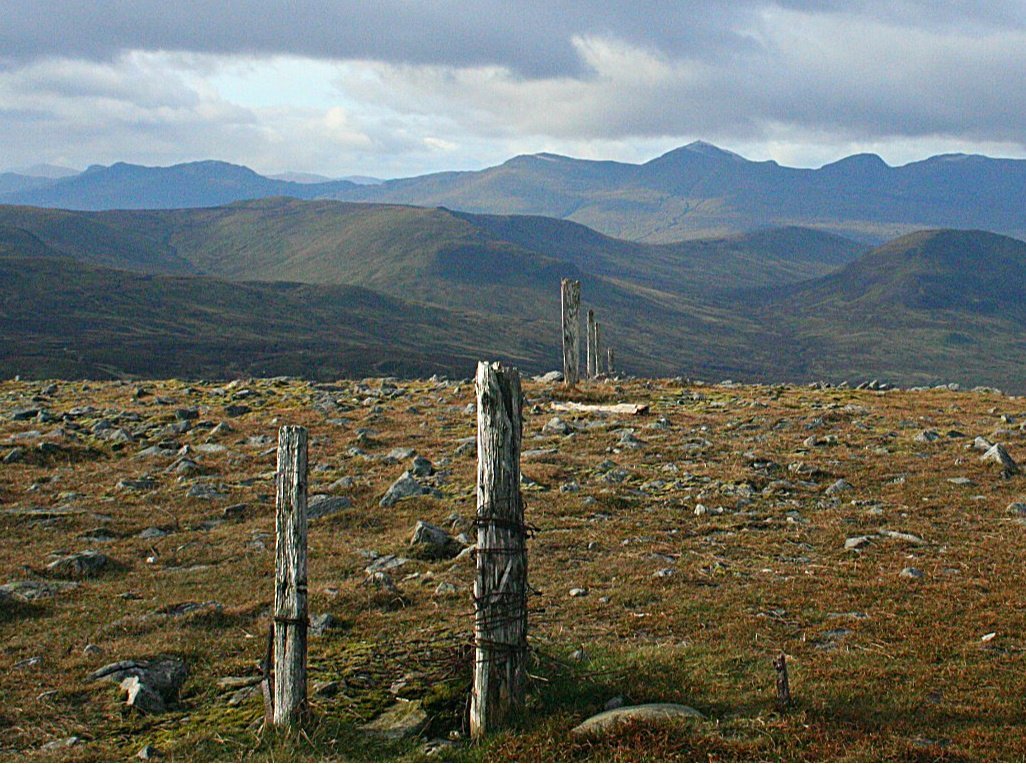Where are the Highlands of Scotland seems an easy question – but do we mean geographically or culturally or just our taste in scenery? Maybe it’s just those parts of Scotland that conform to a romantic stereotype of bens, glens and tartan – and that’s easy to find.
Where to find the essence of the Scottish Highlands at first sight doesn’t seem too hard. But it is really a two part question: where are the Highlands in terms of their geography – but also in a cultural sense.
Of the two parts, the geography or geology part is the more straightforward. Take a look at the sketch map further down the page.
Separating the Highlands from the more populous central belt of Scotland, the Highland Boundary Fault runs south-west/north-east across Scotland.
It reaches the North Sea at the pleasant little town of Stonehaven, well within the city of Aberdeen commuting belt. Its other mainland town extremity is at Helensburgh, like Stonehaven a commuting kind of place but this time for Glasgow, Scotland’s largest city.
One way of getting to grips with how Scotland is laid out – and where the best scenery can be found is just to take a guided tour. See just below. That also means you don’t have to read the rest of this page – wait…is that a plus point though?
By the way, note there is a special five-star day trip to the Highlands from Edinburgh in the suggestions below that is perfect if you are short of time. (It’s very popular as well.)
Follow that Highland Boundary Fault!

To be more accurate, the fault line that separates Highland and Lowland also runs away down and south-west from Helensburgh (which is situated by the ‘H’ of ‘Highland Boundary Fault’ in the sketch map here!)
That’s the Rosneath Peninsula, on the far bank of the Gareloch, with a bend in the widening Clyde estuary in line with the fault line.
In the photograph below, taken from the Three Lochs Way, just above Helensburgh, looking south-west, the fault line is in the dip in the middle distance, left of centre.
Take a look…

This feature continues on down the Clyde estuary and through Arran, which is the island faintly seen on the horizon.
(See? More going on in the picture here than you first thought, eh?)
East of Helensburgh, the straight-ish fault line runs through the islands of Loch Lomond, through Conic Hill behind Balmaha and off to the north-east via the Menteith Hills at Aberfoyle.

Strathearn and the Earthquake Centre of Scotland
On goes the fault line up through Strathearn, via the handsome wee town (or big village) of Comrie in Perthshire.
An interesting aside here is that Comrie is sometimes called the ‘Earthquake Centre of Scotland’ or ‘The Shakkin Toon’ (shaking town).
That came about because they get more tremors here than anywhere else in Scotland – simply by its very close proximity to the Highland Boundary Fault. (By the way, we are talking occasional tiny, tiny tremors here – you’ll be fine.)

See here – Ben Chonzie as a distant white dome on the left. But if you stand on the summit of Ben Chonzie, this next view is what you see, still looking north. (No snow in this picture – taken in autumn.)

Wait, a moment ago (I hear you say) we were talking earthquakes in Scotland? Now, it must be repeated that there are very few and also very, very tiny tremors here, in world terms.
But enough for two local men, one the postmaster, the other a shoemaker, to start keeping records of tremors as early as 1839.
In 1874 a small square building was constructed to hold measuring instruments. Earthquake House in Comrie was restored in 1988 and still holds working seismometers, old and new. (You are welcome to peer in through the windows at them.)
Into Strathmore – ‘the big valley’
Anyway, off goes the ‘HBF’ up towards the Grampians, the general name for the plateau lands of the central and eastern Highlands. The boundary is actually very clear, as it forms the northern edge of Strathmore (Gaelic: big wide valley).
The main A90, Aberdeen-bound, has a rolling wall of hills in parallel to it and from, say, around Forfar, it looks impenetrable – a real Highland barrier. Keep reading below…

The Angus Glens – off the beaten track
Though the line of the Grampian hills look all but impenetrable long and lovely glens reach deep into the heartlands. The Angus glens such as Prosen, Isla and Esk and others are worth exploring – should you decide Angus is worth a look. (It definitely is…)
And you can also cross the Highland Boundary Fault if you follow the A93 out of Perth to Blairgowrie and beyond – a real upland motoring adventure.
(Stop me, someone. I sound as though I am writing one of those awfully insincere tourist brochures.)
Anyway, you get the picture. Where are the Highlands? Well, anyone with any kind of an eye for landscape can see that the central belt of Scotland suddenly and dramatically gives way to the Highlands – at Balmaha on Loch Lomond, at Aberfoyle and Callander in the Trossachs, at Dunkeld on the A9, Blairgowrie and so on.
You enter a portal and it isn’t just geology; it’s partly a cultural thing…..
“…if you are in search of the Highlands, be assured that you only have to drive west of Aberdeen for barely half an hour before it starts to ‘feel’ Highland again along the valley of the River Dee.”
Where are the Highlands – is it a cultural thing?
Ah yes, part two of the answer to the question about tracking down something typically Highland.
Take my own case: I was born away north of the Highland Boundary Fault, in a coastal town overlooking the North Sea. My ancestors there went back for generations.
But I do not consider myself to be Highland in any way. (Well, all right, I’ve got Menzies on one side!)
Inland from my home town are trim farms, intensively cultivated fields, few woods and only the hints of hills, away to the west.
By culture and language and even scenery then, the Highlands of Scotland are not on the coastal strip that runs north past Stonehaven (where the Highland Boundary Fault reaches the east coast).
This easternmost coastal strip continues up and beyond Aberdeen to rural farming areas such as Formartine, Buchan, and on round into the Moray Firth. That’s the big bite out of the east coast.
The coastal strip continues into the northern portions of the old county of Banffshire – and even Moray and beyond. (We debate if Moray is in the Highlands on that link.)

(Pictured here.) This is a ploughing match at Fordyce in Aberdeenshire. Nothing Highland at all about this picture.
And the conversations between the ploughing competitors, farmers, judges and everyone else there that day would be more or less opaque to outsiders.
But it wouldn’t be in Gaelic. It would be in the Lowland Scots tongue. (Follow that link for more on Scottish words.)
For instance, as a native of these north-east coastal lowlands (as you can see from the sketch map, beyond the Highland line), my first language there – the one we spoke in the playground at school – had in its vocabulary borrowings from French, Scandinavian, German and Dutch.
But it owed much less to Gaelic, the language of the real Highlands. (My first tongue was or is Scots – the language, for example, of Robert Burns when he wasn’t writing in English.)
(In reality, there are plenty of place names that suggest Gaelic was formerly spoken in these north-eastern Lowland fringes. But the Highland language of Gaelic retreated from these eastern areas long ago.)
Where are the Highlands – just a state of mind?
OK, so we have quintessentially Lowland Scotland by language and culture existing north of the Highland Boundary Fault on a narrow strip along much of the east coast.
However, if you are in search of the Highlands, be assured that you only have to drive west of Aberdeen for barely half an hour before it starts to ‘feel’ Highland again along the valley of the River Dee.
Certainly, the old Queen Vicky thought so, as she and Albert built their retreat on Deeside – Balmoral Castle.
There Victoria had her Highland fantasy, with wall-to-wall tartan furnishings and tartan-clad lackeys.
So the question of where are the Highlands can be geographically answered by saying they are north of the Highland Boundary Fault as described above. Yet, paradoxically, on the eastern edge from Aberdeen round into the Moray Firth you will find essentially a Lowland heritage.
Time to pull us back to the proper Highlands then.

(Pictured here) This is Kilchurn Castle and the top end of Loch Awe (which is actually Scotland’s longest loch). It’s pretty typical Highland scenery, though maybe you would have preferred something a little more purple with heather perhaps?
It’s August so there’s no snow, only cloud shadows. The picture is taken from the Inveraray road and it’s impossible to get the power lines out of shot. Sorry. Still, I bet you hadn’t noticed till I mentioned them.
Finally, from an administrative point of view, even the tier of government or ‘Local Authority’ called the Highland Council has boundaries that do not take in all of this area. The Highlands of Scotland also spill into Perth and Kinross, Stirling, and Argyll and Bute.
Perhaps the real answer to the question of where are the Highlands is, basically, where it starts to look like our preconceived and learned notions of what the Highlands are!
And these expectations have been influenced for generations by romantic ideas of the cult of the picturesque promoted by the likes of Sir Walter Scott or Queen Victoria and many others.
If you’d asked Scott where are the Highlands then he would have unhesitatingly pointed to the Trossachs. (Oh, and as he was a lawyer, he would then have sent you a huge bill for asking a question…)
Anyway, these ideas of the picturesque were given full reign in those areas of Scotland where, historically, the clans with their separate culture, economy and allegiances, used to be found.
There’s more of this high falutin’ stuff on the Trossachs page. Or if you just want some nice Highland landscapes then click that link.
The Highlands of Scotland? Och, just keep driving north and you’re sure to find them!
More on the geology of Scotland for the interested layman. (Recommended book at a good price!)